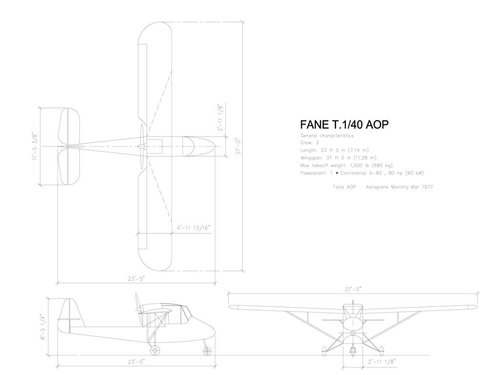Unfortunately Ord-Hume gives no dimensions for the Fly and those given for the Scamp are only the designer's published estimates and, even then, the information is scant, namely:
Span (folded): 30' 0"
Length (overall): 18' 9"
Cruising speed: 100 mph
Returning to the text of Ord-Hume's essay on the Fly, he says that the wing comprised:
- two lightweight box-spars with braced plywood ribs
- plywood leading edge and the whole fabric covered
- NACA 23012 wing section
- two large fuel tanks outboard of the centre-section
and that the fuselage comprised:
- two long and curved booms of solid, laminated spruce tied at the front with a cross-piece and at the undercarriage lift-strut attachment by a downwards curved beam of substantial thickness
- at the upper ends of this beam, a bracket which provided an attachment for the lift-struts and a pivot-point for the beam extensions forming the undercarriage leg upper attachment points
- undercarriage leg lower attachment points in the form of rubber cords to provide springing
- a bracket extending aft from the end of the beam and braced to the fuselage boom by steel tube forming the radius-rod attachment (all of which was contained in the undercarriage fairing).
He also says that the Fly was powered by a 40 hp twin cylinder Praga engine driving a four bladed propellor.
There is also a drawing but it is not clear whether it is intended to be of the Fly or the Scamp. However I'll scan and post this later.








